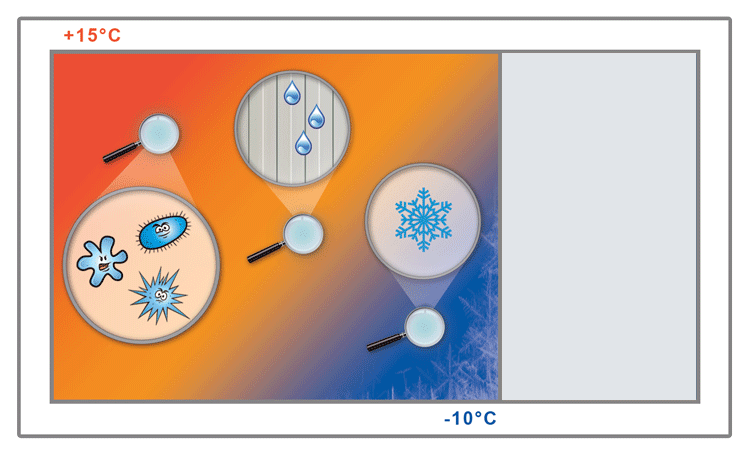Air dryer operation
The workings of an air dryer: There are several techniques available for drying air. We are happy to advise you about these techniques as they relate to your particular situation. Without going too much into technical details and differences, this page describes the physics of air drying.
How an (atmospheric) air dryer works
Drying is the (natural or artificial) process of reducing the moisture level of a substance or object. Atmospheric air drying refers to the drying of surrounding or atmospheric air. The following definitions reflect an important aspect of air drying: there are various ways of expressing the humidity level of air. It is most commonly described in terms of either absolute or relative humidity.
1. Absolute humidity
The absolute humidity level is the amount of water vapour contained within a predefined volume of air. The amount of water is typically expressed in grams, and the amount of air is usually measured in kilograms or m3. As such, the absolute humidity is expressed as the amount of grams of water per kilogram of air (gr/kg). The higher the temperature, the more moisture air can hold. The Mollier Diagram illustrates this clearly.
2. Relative humidity
The ‘relative humidity’ is the percentage of water vapour contained within a specific volume of air at a specific temperature, relative to the maximum amount of water vapour that could potentially be held by the air. The maximum relative humidity is 100%, meaning the air is completely saturated. A relative humidity of 50% means the air contains half the maximum amount of water vapour. The warmer the air, the more water vapour it can hold. Whereas the absolute humidity level gives an indication of the actual amount of water vapour, the relative humidity does not. Extra information is therefore required if the amount of moisture is to be determined from the relative humidity level.
One speaks of air drying when the absolute humidity level is reduced. The dryness of air is typically expressed in terms of the dew point temperature.
Dew point (dew point temperature)
The dryness of air is expressed using the dew point temperature, or simply dew point. The dew point is the temperature (under a constant barometric pressure) at which water vapour condenses. Cold air is not able to hold as much water vapour as warm air and can therefore become saturated with water vapour if it is cooled enough. The relative humidity level then becomes 100% (in springtime, this can be seen outside in the form of dew drops).
Operation principle AFIM® Air Dryer

Situation without Air Dryer

Need more information?
Do you need some solid advice about drying your spaces or specific products? Or do you wish to know more about how an air dryer works? Please don’t hesitate to contact us.
If you need advice about your specific situation, you can let us know about your situation.





